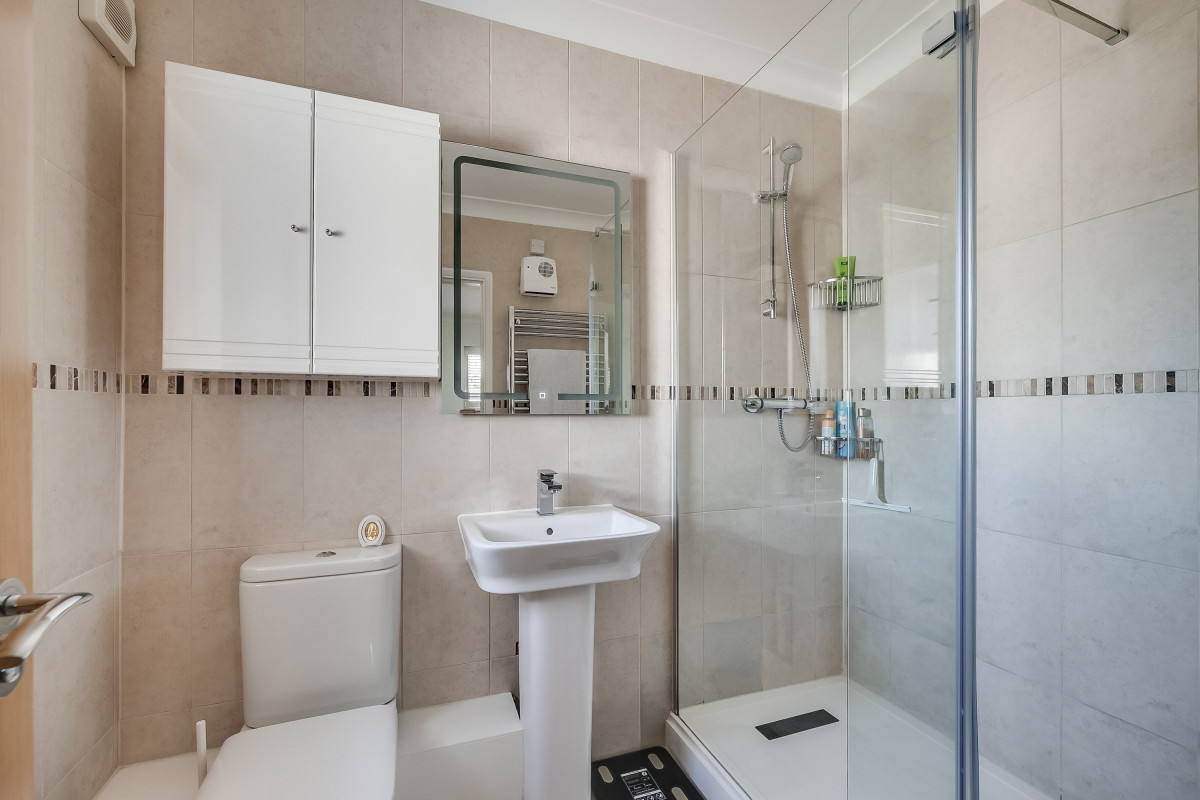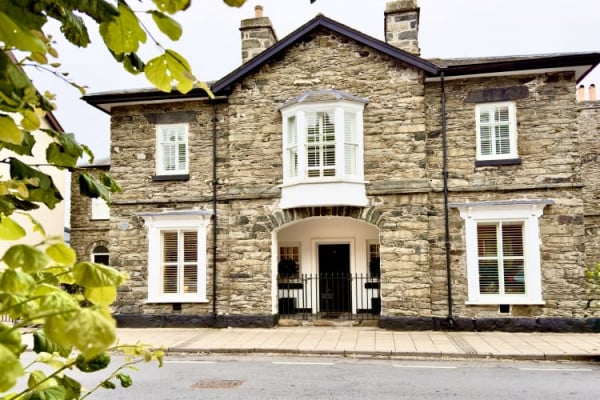Does Removing a Bath Devalue Your Home?

When it comes to home renovations, one of the most debated questions revolves around the bathroom: should you keep the traditional bath-shower combo, or opt for a more modern, space-saving single shower? This decision can have far-reaching implications, not just for your personal preference and enjoyment of the space but also for the value you'll get if you choose to put the home on the market in the future.
The decision to keep or remove a bathtub is not a one-size-fits-all solution – it depends on a variety of factors, including local market trends, buyer preferences, and the overall condition and layout of your bathroom. If you're thinking of sprucing up your bathroom to give it a refresh, consider the pros and cons of both options which we'll dive into here.
The Case for Keeping a Bathtub
Despite the growing demand for walk-in showers, there are several compelling reasons why keeping a bathtub in your home could be a wise decision, particularly when it comes to maintaining or even increasing your property's value.
For families with young children or elderly relatives, a bathtub may be seen as a necessity rather than a luxury. The ease of bathing small children or assisting those with mobility issues in a tub can be a significant selling point for some. As a result, removing the tub could alienate a sizable portion of potential buyers if you're thinking of selling up in the future.
While trends come and go, bathtubs have long been a staple in residential properties, and their absence can be seen as a drawback by some buyers. They're considered a symbol of luxury and relaxation, elevating the quality and sophistication of your home. This can be particularly valuable in high-end or luxury markets, where buyers may be willing to pay a premium for homes with a modern bathroom with all the fixtures and fittings.
The Benefits of Removing a Bathtub
While keeping a bathtub has its advantages, there's a strong case to be made for removing it in favour of a more streamlined shower. First, removing a bulky bathtub can provide a significant advantage in smaller bathrooms where space is at a premium. By eliminating what can be a sizable fixture, you can instantly create a more open and airy feeling, making the space appear larger and more inviting. For homebuyers or tenants seeking a minimalist aesthetic, this can be a distinct benefit.
Moreover, the popularity of walk-in showers has skyrocketed in recent years, with the growing demand for sleeker, low-maintenance bathrooms. These spa-like showers not only offer an indulgent experience but also cater to the fast-paced lifestyles of many homebuyers who prioritise efficiency and convenience over traditional bathing rituals. By embracing this trend and removing the tub, you can tap into a significant portion of the market, including younger buyers and professionals who value contemporary design and functionality.
Factors to Consider
It's important to carefully evaluate several key factors that can significantly influence the impact of your home's bathroom on its overall value and marketability.
The Housing Market
One of the most important factors is the trends within your local housing market. While walk-in showers may be highly sought-after in certain areas or among specific demographics, the preferences in your neighbourhood could be different. It's a good idea to speak with local estate agents or study recent sales data that can provide valuable insights into the amenities and features that buyers in your area tend to look for.
Your Bathroom Layout
You also want to take into account the overall condition and layout of your bathroom. If the existing bathtub is outdated, worn or positioned in an awkward part of the room where it takes up space, removing it and installing a slimmer shower could potentially enhance the space's functionality and appeal. On the other hand, if the bathtub is a well-maintained, high-quality fixture that complements the overall design, such as an elegant claw-foot tub, keeping it may be the wiser choice.
In larger properties with multiple bathrooms, the absence of a tub in just one of the rooms might not be as detrimental. But if you just have the one bathroom, which is the norm for many homes, removing the only bathtub could significantly diminish the home's appeal to certain buyers. Adding a bath back in can be both a hassle and an unnecessary expense to some, deterring future buyers as a result.
Your Budget and ROI
Beyond the potential impact on home value and buyer appeal, the decision to remove a bathtub and install a shower should also factor in the associated costs and potential return on investment.
The cost of removing an existing bathtub and renovating the bathroom to accommodate a new shower can vary widely depending on the complexity of the project, the materials and fixtures selected, and labour costs in your area. On average, these types of renovation can range from a few hundred pounds for a basic shower installation to thousands for a high-end, custom enclosure with premium materials and features.
To better understand the potential ROI, it's advisable to consult with local property professionals who can provide insights into the value that buyers in your area place on bathroom fixtures, as well as tradespeople for the cost of a new bathroom set-up for your home. This will help you assess whether the renovation costs are likely to be recouped when you eventually sell your home, or if you need to rethink your plans.
The decision to keep or remove a bathtub in your home is a complex one that requires careful consideration. While personal preferences and interior design trends play a significant role, the potential impact on your home's value and marketability shouldn't be overlooked. Ultimately, there's no one-size-fits-all solution – the choice between keeping a bathtub or opting instead for a shower-only design will depend on your target buyer, the size and layout of your bathroom, and your long-term goals for the property.
Situated in the Exclusive Rydon Village, a gated development for the over 55's, an immaculately presented 3 bedroom bungalow for sale May 2025. For the full listing please click here.
.png)
A Step-by-Step Video Guide: Uploading a Property
23.12.2025This guide explains how to upload your property listing on Emoov, with a step-by-step video and expert tips on photography, presentation, floorplans, descriptions and video tours to help you get your home live quickly.

Selling Your Home? Here’s What You’ll Need to Have Ready
28.11.2025Thinking of selling your home yourself? Before you dive into viewings and negotiations, make sure your paperwork is in order.

Has Your Home Increased in Value? What 2025 Property Prices Mean for Sellers
30.10.2025Homeowners across the UK are asking the same question: has my property increased in value over the last few years? With new figures showing that over a million homes have jumped by more than 50% in value since 2020, it might be time to take a closer look. Whether you're considering selling, remortgaging, or just curious, here's how to understand your home's worth in today's market.

When and How to Downsize: A DIY Guide to Smarter Selling
12.08.2025Feeling ready to simplify life and unlock your property’s hidden equity? Whether your kids have flown the nest or you're eyeing retirement, downsizing can offer financial freedom … but it’s not as simple as it looks. This guide helps DIY sellers time the move right, budget wisely, and avoid unexpected costs that could eat into your gains.

How to Spot a Serious Buyer: A Seller’s Guide to Reading the Signs
06.08.2025Not all viewers are created equal. If you're selling your home through Emoov and managing viewings yourself, it helps to know which viewers are genuinely interested and which ones are just having a nose around. In this guide, we share clear, practical signs that you're dealing with a serious buyer - and how to create the best environment to help them picture themselves living there.

When to Reduce Your Asking Price - A DIY Seller's Guide
06.08.2025It might feel like a setback, but a timely price adjustment can spark new interest and even revive a stagnant listing. Rightmove reports a 1.2% fall in average asking prices in July 2025 alone - the steepest July drop in over two decades. With affordability stretched and inventory rising, sellers must stay competitive.









